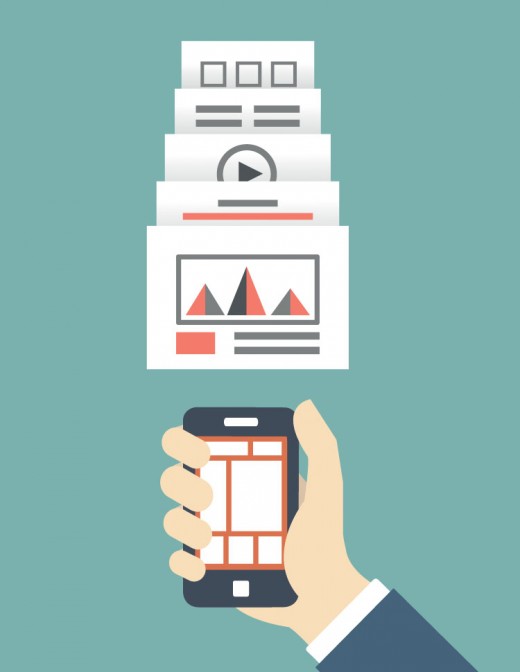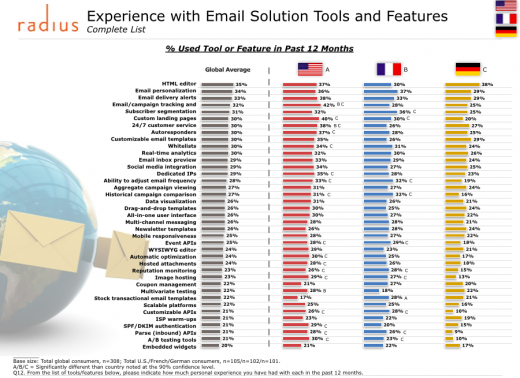
Denise Chan is the US Content Marketing Manager for Mailjet, an email service provider with more than four years of experience and 25,000 clients across 158 countries.
As temperatures rise, it’s time to engage in the age-old tradition of spring cleaning, bidding farewell to those bulky winter items. Your email marketing program should take note of this annual ritual too. It’s just as important to take a moment to re-evaluate the practices your company is following when trying to raise awareness, or find new users or customers.
Is your dashboard cluttered with KPIs? Or maybe you’re buried under a number of testing tools you haven’t used in months. As part of this effort, your email marketing campaigns in particular deserve to be kept up-to-date on the latest trends and to be refreshed every now and then.
Based on a survey of 300 marketers in the US and Europe, we’ve compiled a global “hot or not” list to get you started on decluttering and revamping your email marketing efforts this spring.
HOT: HTML
Margins, padding and style properties are THE thing. In our survey, German marketers rated the HTML editor as their email marketing tool of choice.
They’re onto something. While building an email through a WYSIWYG editor is more user-friendly, it’s harder to catch styling changes that cause unsupported code in the back-end. If left unnoticed, it can render incorrectly in the recipient’s inbox.
The flexibility of designing in strictly HTML is a huge advantage. You know your capabilities and limitations up front. For example, Gmail does not support CSS style tags in the header and footer of emails.
If you currently hand-code emails or are fortunate enough to have a member of your team well-versed in code, pat yourself on the back, thank your developer and breathe a sigh of relief. If not,tools like Code Academy can get you started on learning the structure of coding language.
NOT: Sending without testing for responsiveness
A trend we’ll (hopefully) see less of in the future are non-responsive emails. There’s just no excuse not to test how your email displays before it lands in an inbox. This can be done either manually, by sending test emails to a selected group of coworkers or through a tool like Litmus or Email on Acid. If testing manually, you’ll want to be sure you are sending to all major email clients (Gmail, Yahoo, Outlook, Hotmail, Apple Mail) and screens (computer, mobile, tablet).
Over time, you’ll begin to pick up on each client’s distinct way of rendering as well. Recently, I sent my first email campaign with an emoji in the subject line and learned that most major email clients support emoji display with the exception of Outlook 2003.
HOT: Email with a human touch
In France, marketers rated personalization as their go-to tool when creating email campaigns.
To one-up your competitors and really get the most out of personalization, pair it with segmentation. Grouping recipients into smaller lists helps better test how certain demographics respond to your product. According to a 2014 DMA study, a 760% increase in email revenue came from segmented emails in 2013. Maybe you’ll find East Coast recipients like to receive email more frequently than West Coast. Some other potential segments to test:
-
Age – Consumers ages 25 – 34 are more likely to access the Internet through their phones. Email customers ages 25 – 34 with mobile exclusive content. Leverage geo-location by sharing a promotion that can only be unlocked when visiting your brick-and-mortar store.
-
Interest – Segment out customers who visited your plugins page and send them an email promoting your product integrations.
-
Product Usage – Email a customer who regularly uses your product and invite them to promote your product on social media by tweeting about their experience or offer a promo code to refer a friend.
Remember the content that each group responds to and continue to build on these preferences to make the conversion process as seamless as possible.
NOT: One message fits all
On the other hand, something we’ve been seeing go out the door is standardized messaging. Some companies have even gotten to the point where no single customer receives the same content as another (Gilt and Amazon are two known e-commerce pros that do this).
While not everyone has the infrastructure and resources to personalize to this level of granularity, it’s certainly something to aspire to.
If you’re just starting out, first find a basic segment in your user base to split your campaign with. Continue to slice your list into these segments as your company grows and eventually you will be able to put a more automated solution in place.
HOT: Email campaign tracking and reporting
U.S. marketers have used email campaign tracking and reporting 10% more than German and French counterparts in the past year. I believe tracking is really something that should be universally adopted. Email tracking helps marketers learn how customers respond to different pieces of content, and also when to remove customers who have opted in but aren’t engaging with emails.
Don’t let your hard work go to waste – check to see if your email service provider automatically adds tracking tags on your links, if not, you can tag your links using Google Analytics’ URL builder and measure your click-through rate there.
But really, the neatest thing about tracking the opens and clicks of email campaigns is understanding what role email plays in your overall conversion funnel. Does it drive engagement to other social channels? Or, which purchases are customers most frequently considering?
Looking at the bigger picture helps identify the best way to use email and have it drive value long after that first click.
NOT: Testing sporadically
Many marketers dread testing, thinking that it takes up too much time and resources.
But you can start small and still find impactful results. Some email service providers even have built-in A/B testing tools that allow you to set up a test in just a matter of minutes.
Make it a practice to build a hypothesis into each campaign, it can be something as simple as “I think sending at night will drive a higher click-to-open rate.” Being in the mindset to learn from each campaign can help you improve communication with each email sent.
These ‘hot’ trends will help your marketing program spring forward by allowing you to work smarter, not harder.
Read Next: Common email mistakes that’ll haunt most professionals
Get the TNW newsletter
Get the most important tech news in your inbox each week.







